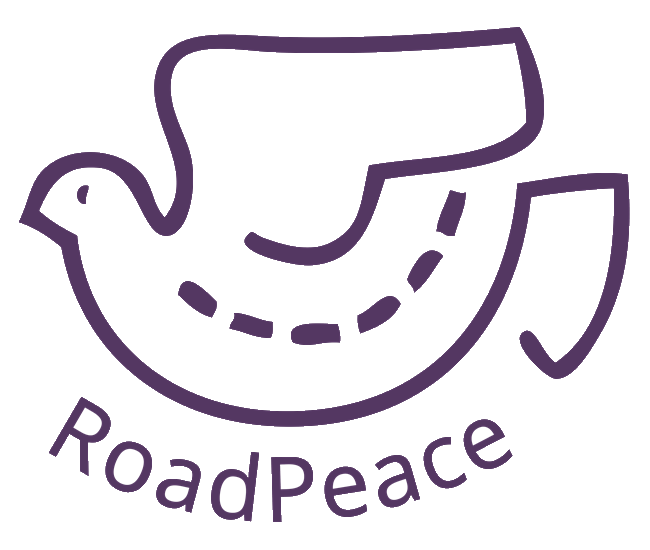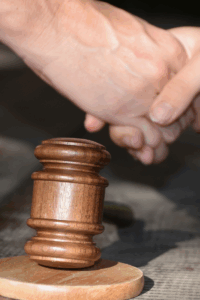- The Legal 500 Leading Firm 2025
- Ranked in the Chambers UK
- 97% Success Rate


CRPS Solicitors for Complex Regional Pain Syndrome
Our CRPS Solicitors specialise in getting clients the outcome they’re owed for their pain and suffering.
Also known as Reflex Sympathetic Dystrophy (RSD), this condition can be caused by an injury to the sympathetic nerves, resulting in severe pain. The condition can be catastrophic, permanent, and disabling.
Brian Barr Solicitors are a firm supporter of and work closely with Burning Nights CRPS, a national UK charity working to improve life for those affected by CRPS.
Unfortunately CRPS affects many people in the UK and can cause them to experience persistent, severe and debilitating pain. When you live with a chronic illness it is important to access support from those who really understand your condition.
Also known as Reflex Sympathetic Dystrophy (RSD), this condition can be caused by an injury to the sympathetic nerves, resulting in severe pain. The condition can be catastrophic, permanent, and disabling.
Brian Barr Solicitors are a firm supporter of and work closely with Burning Nights CRPS, a national UK charity working to improve life for those affected by CRPS.
Unfortunately CRPS affects many people in the UK and can cause them to experience persistent, severe and debilitating pain. When you live with a chronic illness it is important to access support from those who really understand your condition.
Brian Barr Solicitors is specialised in chronic pain conditions such as CRPS. Our expert CRPS Lawyers are specialists with years of experience supporting sufferers through legal cases related to their condition, obtaining high settlements. We pride ourselves on our open and transparent communication, from updates about your case to our funding options.
Right from our initial assessment, we will work with you to understand your unique situation, and inform you of your options to continue your case.
We can help you gather evidence to build a strong case, liaise with the other party or insurance provider, and represent you in court.
As specialist CRPS Lawyers, we understand that the stress that comes with court cases can be overwhelming. This is why we always attempt to resolve these cases out of court. However, if moving to a court case becomes necessary, we have the experience, knowledge, and expertise to fight for you, and get you the outcome you are looking for.
How can CRPS Solicitors help sufferers?
Brian Barr Solicitors is specialised in chronic pain conditions such as CRPS. Our expert CRPS Lawyers are specialists with years of experience supporting sufferers through legal cases related to their condition, obtaining high settlements. We pride ourselves on our open and transparent communication, from updates about your case to our funding options.
Right from our initial assessment, we will work with you to understand your unique situation, and inform you of your options to continue your case.
We can help you gather evidence to build a strong case, liaise with the other party or insurance provider, and represent you in court.
As specialist CRPS Lawyers, we understand that the stress that comes with court cases can be overwhelming. This is why we always attempt to resolve these cases out of court. However, if moving to a court case becomes necessary, we have the experience, knowledge, and expertise to fight for you, and get you the outcome you are looking for.
Get In Touch
- To start your claim, simply complete the form below and we will be in touch shortly.
- No Win No Fee Claims
- Friendly & Compassionate Service
- Easy Claims & Transfer Process
- Available on WhatsApp
£700,000 claimed for client suffering from chronic pain.





Looking For A CRPS Lawyer To Represent You?
Get in touch today to see how Brian Barr Solicitors can help you.

Steven Akerman
Personal Injury Solicitor & Director, Brian Barr

Alex Cohen
Personal Injury Solicitor & Director, Brian Barr

Philip Cohen
Director, Brian Barr
Why use a specialist CRPS Solicitor?
If you have tried turning to a law firm who does not specialise in chronic pain, you may have found solicitors who do not understand the nuances of these conditions, do not have the experience to achieve great settlements, and you may have lacked the network of specialists around you to properly support your case.
When you pursue your case with Brian Barr's CRPS Solicitors, you get access to experts with a combined experience of over 40 years in this field. Our accident solicitors in Manchester understand CRPS, the complexity of these cases, and are aware of what you're going through, from initial medical assessments down to a payout for their pain and suffering.
Our Partnership with Burning Nights
Brian Barr Solicitors work closely with Burning Nights, a CRPS support registered charity. We are proud to be on their panel of trusted legal partners.
The charity’s vision is a world free of CRPS and the pain it causes to its sufferers. The work that Burning Nights has been incredibly valuable to the community, and we look forward to supporting CRPS patients through the charity.

CRPS is a chronic condition which causes pain and other life-changing symptoms. CRPS usually affects a person’s limbs, such as an arm or a leg, and usually develops after a trauma such as a stroke, car accident or an injury. CRPS symptoms are not the same in every case, and though there are some similarities felt by some sufferers, it is entirely possible to meet someone else living with CRPS who has none of the same symptoms as you.
Those suffering from CRPS tend to experience pain that is greatly amplified and disproportionate to the severity of the injury itself.
Anyone can develop CRPS following an accident or injury but it is unknown why some people go on to develop the condition following trauma while others will go on to make a full recovery.
Many cases of CRPS occur after a forceful trauma to a limb from incidents such as road traffic accidents, but, more rarely, it can be caused by heart attacks, surgery and infections. The exact cause of the disorder is still unknown.
It is thought to be caused by an injury or dysfunction in the central or peripheral nervous systems causing those suffering from CRPS to experience severe pain.
It is also believed by some that the symptoms are too complex to be as a result of one factor and that CRPS is caused by several different conditions. It has also been suggested that genes may play a role in who develops CRPS after an injury or trauma.
Most doctors and specialists have accepted that CRPS usually has three main stages, although it isn’t a condition which is systematic and not all of the stages may be followed or experienced by each individual. Some people develop severe symptoms straight away whereas others may never experience the later stages. Here is a closer look at the three CRPS stages that the condition may manifest into.
Stage one sees changes which last one to three months and is characterised through:
- Changes to the temperature of skin – switching between warm and cold for no discernible reason
- Severe burning, aching pain in the affected area which worsens when touched in the slightest way
- Muscle spasms
- Join pain or swelling
- Rapid growth of nails or hair
- Blotches or changes to skin tone and feel including shininess, additional perspiration and thinness.
Stage two generally sees changes which last from 3 to 6 months and is characterised through:
- Slower hair growth
- Increasing pain which continues to worsen
- Cracked and easily broken nails
- Stiff joints
- Weakened muscles
Stage three includes changes which are irreversible and need dedicated pain management and include:
- Constant or near constant pain in the entire limb
- Muscle wasting
- Limited movement in the limb due to the tightened muscles and tendons
The progress through these stages is not necessarily sequential, as previously mentioned and there is nothing to say individuals won’t experience one of the stages and go through another. There is also no research to suggest which CRPS stages may be experienced by each individual dependent on the cause of their condition.
There are two different kinds of CRPS. Type 1, also known as Reflex Sympathetic Dystrophy Syndrome (RSD), typically occurs after a minor or major tissue injury to a limb.
According to the Mayo Clinic website, around 90% of CRPS sufferers have Type 1. Type 2 CRPS occurs after a distinct nerve injury, but unlike CRPS type 1, Type 2 does not migrate from the original site of the injury.
Diagnosing CRPS Type 1 is particularly difficult as there is no damage to the nerves and usually no damage to the bone and little damage to the tissue. The pain is out of proportion to the accident or injury that occurred and the main symptoms are usually allodynia, continuing pain, and hyperalgesia, disproportionate pain to touch, movement or pressure.
CRPS Type 2 differs from Type 1 because of the tangible nerve injury which can be found and also because the pain doesn’t migrate from the original site. Whilst Type 1 may result in pain in the whole limb over time, CRPS Type 2 is a condition which remains specific to the original place that was injured.
Complex Regional Pain Syndrome Type 2, formerly known as causalgia, is the rarer of the two conditions known as CRPS. It is a severely painful and chronic condition which develops as a result of an injury to a peripheral nerve. The pain is usually described as an intense burning which doesn’t subside and the pain is specific to the affected area, due to the injury to the nerve.
CRPS Type 2 is caused by a trauma to a large nerve in one of the limbs, usually in the peripheral nervous system. This could be a simple injury or something more traumatic such as a car accident or a fall from height. The disease progresses over time and can result in loss of movement and mobility in the affected limb, alongside increased pain which can become resistant to painkillers over time.
The characteristic symptom of CRPS is pain. Commonly described as a burning, intense pain specific to a single location on one of the body’s limbs, it is a pain which is out of proportion to the severity of the injury or the trauma which had occurred. CRPS pain is chronic, often getting worse over time rather than improving and often leads to the development of further symptoms. The symptoms and their severity vary from person to person and may change.
Some of the common symptoms include:
- Extreme sensitivity to pain that is out of proportion to the injury or trauma
- Excessive or prolonged burning pain after contact – as the affected area has increased sensitivity, even light contact can cause extreme pain
- Continuous pain that gets worse over time
- Experiencing pain from something that shouldn’t be painful such as a light touch or a change in temperature
- Changes in skin, hair and nails – skin may become blotchy, dry or scaly, nails crack and can become grooved or brittle, and hair often becomes thin
- A decrease in range of motion of the affected limb or limbs
- Stiffness of limbs
- Insomnia- difficulty sleeping
- Changes in skin temperature- the affected limb may feel warmer or cooler than the opposite limb
- Changes in skin texture
- Tremors and muscle spasms
- Stiffness and swelling of the affected joints
The symptoms that usually occur first are pain, swelling, changes in temperature and hypersensitivity. The condition is irreversible and may spread to other limbs in the body, but, with a combination of medicine and other treatments, most people experience a reduction in their pain within a few years.
Sometimes, although rarely, CRPS can cause complications, including ulcers and skin infections, muscle atrophy and muscle contractures in which the muscles shorten causing loss of movement.
Neil Swift developed Complex Regional Pain Syndrome following an accident at work. It was a difficult time for Neil, his wife and two young children.
The unrelenting pain meant that his role as father and husband was tough, as he wasn’t able to work, or do very much at all.
Brian Barr was delighted with the high level of compensation he was able to secure for Neil. The final figure was just over £905000.
Mr. Bredbury injured his hand at work. He developed Complex Regional Pain Syndrome (CRPS). He brought a case against his employers who accused him of grossly exaggerating for the purposes of financial gain. He took his case to trial represented by Brian Barr Solicitors and succeeded for some £290,000.
Ms BJB underwent various treatments for her injuries. Following the treatments she suffered dizziness, pain, headaches and nausea. Unfortunately, despite the treatments, Ms BJB was left with a wrist that was of little functional use. The court accepted the Reflex Sympathetic Dystrophy had been caused by the accident and she was awarded £194,582.79 plus interest.
Complex regional pain syndrome (CRPS) is a poorly understood condition in which a person experiences persistent severe and debilitating pain.
It is difficult to estimate exactly how common CRPS is, as many cases may go undiagnosed or misdiagnosed. It can begin at any age, including childhood. This being said, however, the average age for symptoms to start is around 50-years-old, with 3 out of 4 sufferers reported to be women.
There is no known cure for CRPS, however, a combination of physical treatments, medication and psychological support can help to manage symptoms.
Some of the main treatments used to treat CRPS are outlined below.
Medication
There are several medicines available that can help treat CRPS, however, none of them are licensed for use in the UK. This means that these medicines may not have undergone clinical trials to see if they are effective and safe in treating CRPS specifically.
However, these medications will have a licence to treat another condition and will have undergone clinical trials for this. Doctors may choose to use an unlicensed medication if it is effective and the benefits of treatment outweigh any risks. Some of the main pain relief treatments include:
- Non-steroidal anti-inflammatory drugs (NSAIDs) – These over-the-counter painkillers, such as ibuprofen, are usually the starting point for treatment. They can help to reduce pain caused by the original injury that triggered CRPS. However, NSAIDs are unlikely to directly reduce CRPS pain.
- Anticonvulsants – Usually used to treat epilepsy, gabapentin and pregabalin are the most widely used anticonvulsants for treating CRPS. Common side-effects include drowsiness, dizziness and weight gain. There is also a small increased risk of suicidal thoughts.
- Tricyclic antidepressants (TCAs) – Originally designed to treat depression, amitriptyline and nortriptyline are the most widely used TCAs for treating CRPS. These medications can often aid sleep, a side effect that some sufferers regard as a benefit.
- Opioids – For those experiencing severe pain, opioids such as codeine and morphine can sometimes provide relief. The benefits of using opioids may sometimes outweigh the risks. Unfortunately, these medications are often not very effective in treating CRPS.
Spinal cord stimulation
If medication fails to lessen pain, spinal cord stimulation may be recommended. This invasive procedure involves a battery-operated device being implanted under the skin on the stomach or buttocks and attached to electrodes placed close to nerves in the spine.
The device produces mild electrical pulses that are sent to the spinal cord. The pulses change how pain is experienced; for example, a tingling sensation may be felt in the part of the body that usually hurts, which can mask pain. The level of stimulation can be adjusted as pain improves or gets worse, and the device removed if necessary.
Sympathetic nerve block
An injection of anaesthetic next to the spine can interrupt activity of the sympathetic nerve and increase blood flow. This can offer temporary pain relief, however, is not considered to have long-term benefits.
Mirror visual feedback and graded imagery
Performing certain movements can be difficult for CRPS sufferers as information needed by the brain is often missed or confused. Techniques, such as mirror visual feedback, mirror box therapy and graded motor imagery aim to improve movement by retraining or ‘tricking’ the brain into thinking symptoms have disappeared.
Physical rehabilitation
This involves relying on different treatments to enable CRPS sufferers to gradually increase activity and functionality without making the pain worse. Techniques include gentle movement, such as stretches in water (hydrotherapy) or light, weight-bearing exercises. Desensitisation is a commonly used technique focusing on how unaffected body parts feel when touched with various materials compared to affected areas. The process can be uncomfortable or painful initially, however, may eventually reduce sensitivity in the affected body part.
Pain management
Due to the complex nature of CRPS, different health professionals will be involved in care pathways, such as a GP, physiotherapist, psychologist, occupational therapist and pain relief therapist. These specialists work individually or jointly on Pain Management Programmes (PMPs), usually based in local hospitals or clinics, and treatments can include such things as cognitive behavioural therapy (CBT).
Self-management
There are many approaches aimed at helping CRPS sufferers to take more control of their own condition. These include:
- Education – to fully understand the complex condition
- Support – to stay active and continually use the affected body part
- Learning – new techniques to manage increases in pain
- Relaxation – practising yoga or meditation to improve quality of life
- Activity management – to avoid peaks and dips in movement due to pain
- Home rehabilitation – incorporating desensitisation into daily life
- Access – joining local support groups and networks
*Please note, this information should not be taken as medical advice. Brian Barr Solicitors are not medical experts, therefore, this page is for information purposes only.
Complex Regional Pain Syndrome (CRPS) is a lifelong condition which is known for being very hard to diagnose, as there is no single test which can be carried out to give you a yes or no answer.
CRPS diagnosis is mainly based upon the symptoms which you present, the results of a full physical examination and a number of different tests which may be carried out and which can give a clearer picture of the type of pain you’re suffering from and whether there is any other underlying cause for it.
Below are just some of the tests which may be carried out if your doctor suspects you may have CRPS:
Blood tests: carrying out blood tests can discover whether you have an underlying infection causing the pain or rheumatoid arthritis.
X-Ray: an x-ray or bone scan on the affected limb can show any problems of bone thinning (osteoporosis) or any other abnormalities with the bones and joints.
MRI scan: used to find if there are any other underlying problems with your bones or tissue.
Nerve conduction studies: doctors may carry out tests which involve blocking the sympathetic nervous system with an anaesthetic. If they find that blocking this system relieves the pain, then they know they can focus on it as the cause of the pain.
Not all doctors will carry out every single one of these tests and not all of them are necessary to receive a CRPS diagnosis but it is best to be prepared for as many tests as possible, to guarantee you get the results that you need to start upon the right treatment plan.
After CRPS Diagnosis
Once your doctor has diagnosed you with CRPS the next step is usually a referral to your local specialist pain clinic and the majority of these are found inside local hospitals. As soon as you receive your diagnosis your doctor should refer you on so you can begin to get the treatment you need and see a downward change in the pain you are suffering.
Managing CRPS pain is a case of bringing together a range of different treatments, lifestyle changes and personal exercises to help your condition feel manageable and not all-encompassing. Treatment for CRPS may involve a large care team or simply a couple of specialists.
Treatment for CRPS includes self-management and lifestyle changes, physical rehabilitation, pain relief medication and psychological support and counselling.
Pain Relief
CRPS pain management begins with pain relief, usually organised through your GP or the professional pain clinic at your hospital. Pain relief may be in the form of NSAIDs, anticonvulsants or tricyclic antidepressants.
Pain relief is usually provided alongside physical rehabilitation which may be in the form of sessions with a physiotherapist or guidance from related professionals.
A physiotherapist may set you specific exercises such as stretching or weight bearing and they may introduce the technique of desensitisation.
This works through teaching your body how different textures and touches feel against non-painful parts of your body and then touching the same textures against the painful parts, focusing your energy on how it felt on the other parts of your body, training your mind to be desensitised to the pain.
Another technique you may learn is mirror visual feedback.
Self Management
Another key part of your pain management, recognised in the majority of medical pain management guidelines, including the NHS, is self-management.
Learning techniques in your everyday life to manage the pain of CRPS can really help make a difference. Your doctor should advise you to remain as active as possible and use the affected limb as much as you can, as well as learn how to pace yourself and get to know your body’s limits and where it is comfortable.
You may also consider learning relaxation techniques to improve your sleep quality and rehabilitation techniques such as desensitisation can actually be continued and worked upon at home.
Managing CRPS Pain can also be much easier if you are able to access a local support group, something your local pain clinic or GP surgery may be able to help you with.
Brian Barr Solicitors are leading CRPS Lawyers, particularly in cases where CRPS has been caused by an injury. We know how debilitating the condition can be and will assist with applications for Total Permanent Disability under Critical Illness Policies or Accident Protection Policies. Additionally, if you had an accident and your solicitor advised you to settle for too little, we may have a remedy.
The legal landscape for Complex Regional Pain Syndrome (CRPS) can be intimidating, particularly when you’re concerned about the financial aspects. With our No Win No Fee promise, rest assured that you are not financially at risk should you not be satisfied with the outcome of your CRPS case.
Brian Barr Solicitors is renowned for its expertise, specifically in CRPS-related legal matters, and is staffed with highly trained CRPS Solicitors. Our team includes leading experts such as Alex Cohen, Philip Cohen, and Steven Akerman, all of which have been practicing in this area of the law for over a decade, securing many six-figure settlement figures for clients across the UK.
We are often able to secure interim payments tailored to your needs, enabling you to initiate your treatment or management plans without delay.
For comprehensive guidance on financing your CRPS legal journey, explore our funding options.
Read more about how we support client throughout the UK to claim compensation for their injuries or chronic pain conditions. Brian Barr Solicitors consistently achieves great results and high compensation amounts.
Get In Touch
To start your claim, simply complete the form below and we will be in touch shortly.




